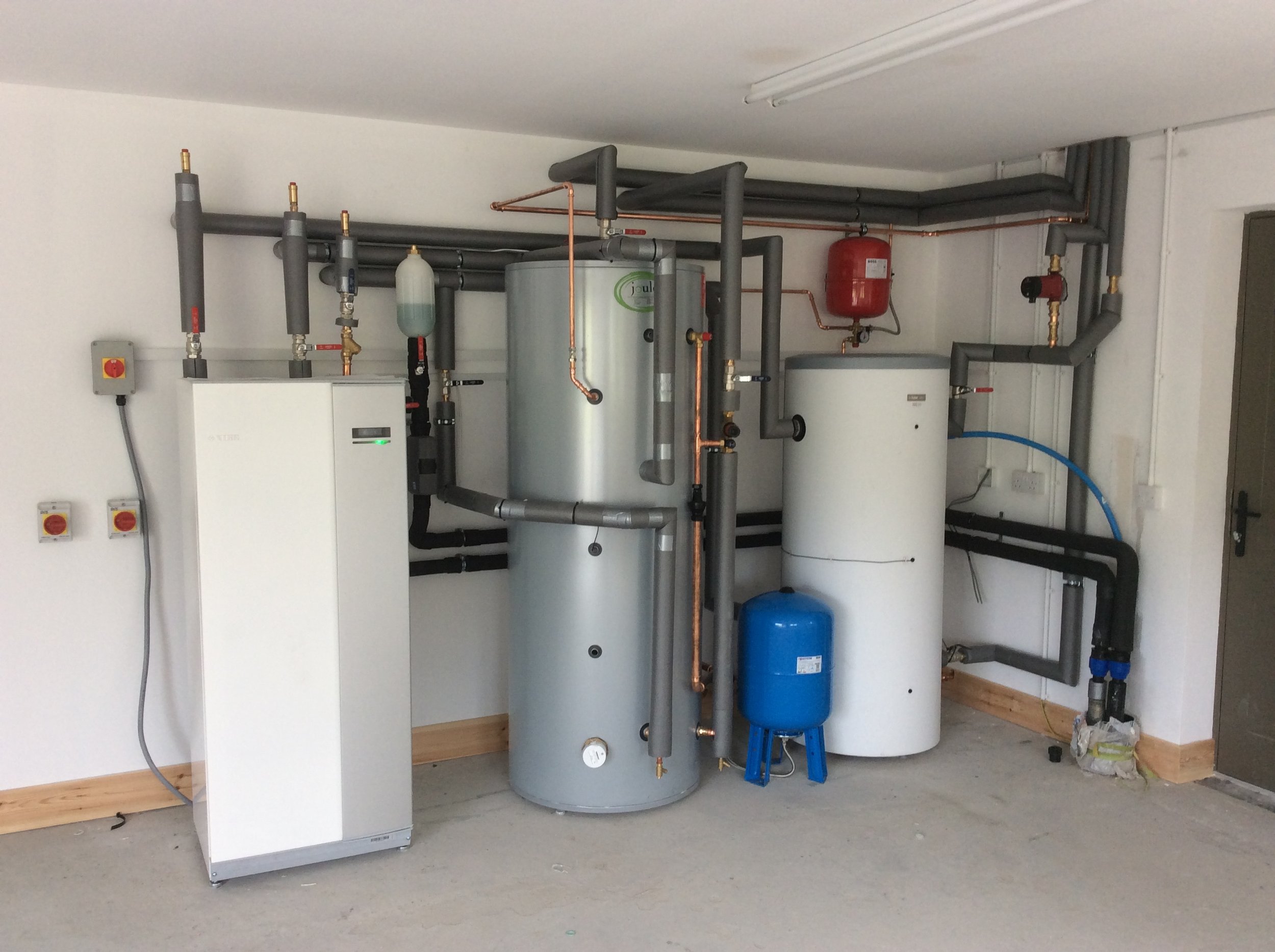Ground Source Heat Pumps
What is a ground source heat pump?
Ground source heat pumps work by extracting heat from the ground and using it to provide energy for heating and hot water in your home. They are very efficient and can convert one unit of energy into as much as five units of heat.
How does a ground source heat pump work?
The heat pump circulates a mixture of water and antifreeze in loops of pipe buried in the ground. This fluid absorbs naturally occurring heat from the earth and passes it through a heat exchanger in the heat pump. From here the energy collected can be used to heat radiators or underfloor heating and provide all the hot water you need. The ground loop fluid, now a few degrees cooler, passes back into the loop and the process is repeated.
The size of the heat pump and the length of the ground loop depends on the size of your property and how much heat you need. For a typical three bedroom detached home this is likely to be around 400 metres. The pipe is buried in horizontal trenches one metre deep and at least one metre apart. Where there is not enough space for this, a vertical loop can be installed in a borehole up to 200m deep. In some circumstances heat can be extracted from a lake or river. We can provide advice on which system is right for you and that will meet your needs.
Unlike gas or oil boilers a heat pump delivers a lower temperature heat over a longer period rather than short bursts of intense heat. This offers a constant and more comfortable indoor climate - radiators feel warm rather than hot to the touch as they do with a gas or oil boiler, which is safer for babies and infants.
Check out this video from Full Charged, which explains exactly how a heat pump works.
Benefits of ground source heat pumps
Energy efficient
Uses a renewable source of heat to provide all your heating and hot water, reducing your carbon footprint
Lowers fuel bills – savings depend on system being replaced
By choosing an electricity company and tariff that provides renewable energy you can further reduce carbon emissions
Requires minimal maintenance – we recommend an annual service to maintain manufacturer warranties and to ensure your system continues to work at its most efficient
No fuel deliveries needed
Our FAQs about Ground Source Heat Pumps
Many factors can affect the costs and timescales for installing a ground source heat pump. We have therefore answered some of our most frequently asked questions to help you determine if a ground source heat pump is the best option for your home.
+ What will a ground source heat pump cost?
Every project is different and so the cost of installing a ground source heat pump can vary due to several different aspects. These include the size of the heat pump, the type of home you have, whether we will need to replace an existing boiler system and whether we need to fit underfloor heating and radiators.
The installation cost of this type of pump depends heavily on whether horizontal loops or boreholes are required. The number of boreholes can greatly influence the cost, as well as whether BIR will be responsible for doing the digging.
+ How long does it take to install a ground source heat pump?
Installing a heat pump normally takes around 3-5 days. However, with so many variables to take into account when installing ground source heat pumps, it is likely that this installation can take a bit longer.
+ Is a ground source heat pump right for my home?
To install a ground source heat pump, your property must also have some land. A site visit would therefore be required to ensure this was the right option for your home. It is however very unusual that we can’t figure out a solution and we also offer air source heat pumps as an alternative.
To organise a site survey with us, please get in touch here.
+ Will I need planning permission to have a ground source heat pump installed?
Planning permission for this type of pump is generally not required unless your home is a listed building or located in a conservation area. In this case, we recommend contacting your Planning Department first.



